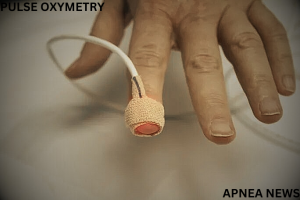Pulse Oxymetry
What is pulse oximetry?
Pulse oximetry is a test that uses a small, clip-like device called a pulse oximeter to measure oxygen levels in the blood. When you breathe, your lungs take in oxygen and send it into your bloodstream. This oxygen-rich blood is carried into your heart, which pumps it to the rest of your body. If your blood oxygen level (oxygen saturation) is too low, it can make it hard for your body to work properly. It can put a dangerous strain on your vital organs.
Pulse oximetry is a painless and quick way to find out if your oxygen level is too low. Quick treatment of low blood oxygen may help you avoid serious complications.
Other names: pulse ox, oxygen saturation monitor, finger pulse oximeter
What is it used for?
Pulse oximetry is used to check your blood oxygen level. The test may be done in a provider’s office, clinic, hospital, or even your own home. An at-home pulse oximeter may be useful if you have a serious and/or chronic lung disease.
Why do I need pulse oximetry?
Your provider may give you a pulse-oximetry test as part of a routine checkup, or if you:
Have a condition that affects lung function. These include chronic obstructive pulmonary disease (COPD), lung cancer, heart failure, and COVID-19.
Are taking medicine to treat lung disease. The test can show how well the medicine is working.
Are having surgery. Your blood oxygen level may be checked before, during, and after your procedure.
Have sleep apnea. This condition causes you to briefly stop breathing during sleep. You may have repeated episodes of breathing interruptions during a single night’s sleep There can be as many as 30 episodes per hour.
What happens during pulse oximetry?
During pulse oximetry:
A small electronic device called a pulse oximeter will be clipped to a part of your body, usually a fingertip.
The oximeter uses a special type of light that passes through your skin and into your blood.
A sensor on the oximeter measures the amount of light. That measurement is used to figure out your blood oxygen level.
After a few seconds, the oximeter will provide a readout of your heart rate and oxygen level.
If you have a condition that affects lung function, your health care provider may recommend you use an at-home finger pulse oximeter or other oximeter to monitor your condition. Your provider will guide you on how to purchase and use your at-home device.
Will I need to do anything to prepare for the test?
If you or your provider is using a finger pulse oximeter, you should remove any fingernail polish. Nail polish can block the light emitted from the oximeter.
Are there any risks to the test?
There is no known risk to having pulse oximetry.
What do the results mean?
Results are often given as oxygen saturation levels. A normal oxygen saturation level ranges between 95 percent and 100 percent. Saturation levels may be somewhat lower and considered acceptable if you have a lung disease such as COPD or pneumonia. Levels may also be lower if you live in an area with higher elevation.
If you are using an at-home oximeter, you should contact your health care provider if your oxygen saturation level is 92 percent or lower. If it falls to 88 percent or lower, seek immediate medical attention.
If you have questions about your results, talk to your health care provider.
Is there anything else I need to know about pulse oximetry?
Pulse oximetry results may be 2 to 4 percent higher or lower than your actual blood oxygen level. For a more accurate result, your provider may do a blood test called an arterial blood gas.
But this test can be painful. It also cannot be used at home or for continuous monitoring. You may need both types of tests to manage your condition.

